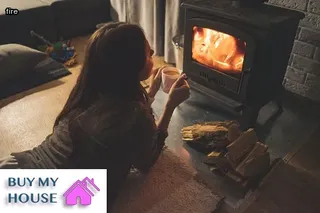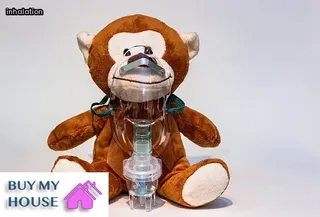House fires can be traumatizing events that can leave lasting emotional and physical scars. When a home catches fire, it is important for those affected to understand the hidden health risks associated with such incidents.
Smoke inhalation during a fire is one of the most serious dangers, as this can cause long-term respiratory issues due to damage caused by carbon monoxide and other hazardous chemicals in the smoke. Additionally, burns are common injuries that can occur in house fires and these may require medical attention.
Asbestos in older homes may also be released during a fire, which poses a serious risk of lung cancer or mesothelioma. Finally, survivors must be concerned about post-traumatic stress disorder (PTSD), which can develop after any kind of disaster or traumatic event.
It is important to recognize the potential health risks associated with house fires so that proper care and treatment can be pursued if necessary.

When a house fire occurs, there can be serious health risks associated with smoke exposure. Smoke inhalation is the leading cause of death in house fires and can cause respiratory problems, but there are also other health risks that are not as well known, such as skin and eye irritation.
In order to protect oneself from these hidden health risks, the following measures should be taken to mitigate skin and eye irritation due to smoke exposure. First, it is important to limit direct contact with smoke by wearing protective gear like masks and goggles if possible.
Additionally, it is beneficial to wash hands with soap and water after coming into contact with smoke, as this can help prevent skin irritation. Finally, it is recommended to keep eyes moist during a fire by using artificial tears or saline drops; this will help reduce any potential irritation caused by smoke or ash particles.
Taking these simple steps can help reduce the risk of skin and eye irritation from smoke exposure during a house fire.
After a house fire, it can be easy to overlook the potential health risks that come along with food safety hazards. Smoke and soot from the fire may contain toxic chemicals and can stain walls, cupboards, and other surfaces.
This can contaminate food and kitchenware that are stored in these areas. In addition, flames and hot smoke can also damage appliances like refrigerators, freezers and ovens which can further affect food safety.
It is important to inspect all items in the kitchen for heat or smoke damage to determine what needs to be discarded before using them again. A thorough cleaning of all surfaces is necessary to remove any soot or particles that could contaminate food items or dishes.
Doing this will help ensure the health and safety of your family by preventing any potential illnesses caused by foodborne contaminants after a house fire.

When a house fire occurs, it can be a traumatic experience for those involved. While physical injuries and visible property damage may be the most immediate concerns following a blaze, there are often less obvious health risks that can occur in the days and weeks after.
Recognizing other long-term health risks following a fire is essential to ensuring everyone's safety. Common issues that can arise include smoke inhalation, which can lead to asthma or breathing problems; toxic exposure from burning materials like drywall or insulation; contamination of food and water supplies; and mental health impacts such as post-traumatic stress disorder (PTSD).
Taking the necessary steps to reduce these risks is key to minimizing any potential harm. Professional home inspections should be conducted following a fire, as well as air quality testing if needed.
It is also important for individuals affected by a house fire to seek out psychological support if needed, as well as medical care for any physical ailments related to the blaze.
Mold is a common issue in households following a fire, as the combination of moisture and heat create conditions conducive to fungal growth. The most commonly found species of mold post-fire include Aspergillus, Cladosporium, Penicillium, and Alternaria.
Aspergillus species are typically identified as green or grey colonies with yellowish hues. Cladosporium can be identified by its black, brown or green colonies with powdery texture.
Penicillium species tend to be blue-green in color while Alternaria is often characterized by its large colonies and dark olive-green coloration. Each type of mold has unique health risks associated with it; Aspergillus can cause allergic reactions or lung infections while Penicillium exposure may lead to hay fever symptoms like sneezing and watery eyes.
Cladosporium poses the greatest risk to individuals with weakened immune systems and Alternaria can cause inflammation in the lungs for those already suffering from respiratory ailments. Identifying the type of mold present after a house fire is essential for understanding the potential health hazards that may exist in the home.

After a devastating house fire, salvaging items safely is essential to protect your health and safety. While the immediate dangers of smoke inhalation and burns may have passed, there are still many hidden health risks associated with trying to collect items from the wreckage.
Knowing the proper strategies for salvaging items after a fire is key to avoiding potential exposure to hazardous materials like asbestos, dioxins, mold spores, and other toxins that can linger in the air and on surfaces. It's important to remove all wet items from the home as soon as possible in order to prevent further damage caused by water seepage.
Wear protective gear such as gloves, masks, coveralls, and goggles when cleaning up debris or handling any melted metals or plastics that may contain toxic chemicals. When sorting through belongings, use caution when handling furniture that has been exposed to flames and heat; these items are likely weakened structurally and could collapse unexpectedly.
Have damaged electrical wiring checked by a professional before attempting repairs or turning electricity back on. Finally, if you suspect that toxic substances such as asbestos or lead-based paint were present in your home prior to the fire, contact an environmental specialist for advice on how best to clean up remaining debris without endangering your health.
Inhaling smoke from a house fire can be incredibly dangerous to the health, and it is important to understand the risks associated with smoke inhalation in order to prevent further harm. Smoke inhalation causes both short-term and long-term health problems, including difficulty breathing, chest pain, headaches, confusion and disorientation, nausea or vomiting, and lung damage.
In many cases, smoke inhalation can even lead to death. To protect against the dangers of smoke inhalation, it is critical that people are aware of the potential risks before entering a burning building.
Additionally, using protective masks or clothing when fighting a fire can help reduce the amount of toxic chemicals inhaled by firefighters. As house fires become more common occurrences due to an increase in population density and climate change causing longer droughts that make buildings more easily combustible, understanding how to safely handle smoke inhalation becomes ever more important.

In order to prevent house fires, it is important to be aware of the potential risks. Common causes of house fires include electrical wiring problems, overloaded outlets, candles and open flames, improperly stored flammable materials, and unsafe wood stoves or fireplaces.
Taking proactive measures such as avoiding overloading outlets with multiple devices and appliances, keeping combustible materials like paper away from open flames, and having an emergency plan in place can help reduce the chances of a house fire. Regularly inspect electrical cords for frayed wires or insulation that is wearing thin and make sure any heat-producing appliances are located away from curtains or furniture.
Additionally, invest in smoke alarms for each floor of your home and check the batteries on a regular basis. Being mindful of these prevention tips can dramatically decrease the possibility of a devastating house fire.
House fires are an increasingly trending topic of discussion, and for good reason. Every year in the United States, fires cause thousands of injuries and deaths and billions of dollars in property damage.
In addition to the physical destruction of property, house fires also present significant health risks that may not be immediately visible. From smoke inhalation to long-term effects of chemical exposure, understanding the hidden hazards associated with a fire can help better equip homeowners to protect themselves from harm.
To minimize these dangers, it is essential to understand the potential health risks posed by smoke – including carcinogenic chemicals – and other potentially hazardous components of fire such as burning building materials. Additionally, recognizing how medical conditions or disabilities can increase risk during a house fire can help those who are more vulnerable prepare for an emergency situation.
Taking steps toward prevention such as installing smoke alarms and regularly checking for faulty wiring are key measures that all homeowners should take in order to stay safe when faced with the threat of a house fire.

Living in a house after a fire can be an unnerving experience and there are some hidden health risks that homeowners should be aware of. Smoke inhalation is one of the most common dangers associated with fire damage, as it can cause respiratory problems in both adults and children.
Additionally, chemical residue from burning materials may have been released into the air during a blaze, creating additional health concerns such as irritation to the eyes, skin, and lungs. It is important to have the home thoroughly inspected for any structural damage that could pose safety risks and also for any lingering smoke or soot particles that could circulate through ventilation systems.
Homeowners should consult with their insurance company to determine if they are eligible for remediation services to help address any potential health issues. Finally, it is advisable to seek professional advice on how best to mitigate any long-term effects of living in a house after a fire.
After a house fire, it is important to throw away items that have been exposed to smoke and soot.
Common items that need to be thrown away include fabrics such as curtains, carpets, and linens; furniture like couches, chairs, and mattresses; and household items such as food containers, electronics, and appliances.
In addition to throwing away these items, it is also important to discard any food from the refrigerator or pantry that may have been contaminated by smoke or soot.
By properly disposing of these items after a house fire, you can help reduce potential health risks associated with exposure to toxins released in the smoke.

When a fire has occurred, the smell of smoke can linger long after the flames have been put out. It's important to consider the potential health risks associated with this lingering smoke.
Smoke inhalation is a serious risk that can cause breathing problems, lung damage and even death in some cases. Additionally, chemicals released from burning materials such as plastics can create toxic fumes that are hazardous to inhale.
Therefore, it is essential to ensure proper ventilation when cleaning up after a house fire in order to reduce these risks. Furthermore, any remaining smoke should be professionally removed by an experienced technician in order to protect your family's health and safety.
House fires can be devastating, not just for the property damage they cause, but also for the hidden health risks they can bring. Smoke inhalation is a common consequence of house fires and can lead to lung damage and other serious respiratory problems.
Fire damage to the structure of a home can also create an ideal environment for mold growth, which has been linked to asthma, allergies, and other serious respiratory illnesses. In addition, chemicals released by burning materials such as plastics and synthetic fabrics can be toxic when breathed in, leading to long-term neurological issues if left unchecked.
Finally, even after the fire is extinguished, residual particles of ash and soot can linger in the air, aggravating existing respiratory conditions or leading to new ones. It is important that anyone who has experienced a house fire understands these hidden health risks associated with fire damage so that they can take steps to protect themselves from long-term harm.
When it comes to uncovering the hidden health risks of house fires, two of the most common toxins released into the air during a fire are carbon monoxide and smoke. Carbon monoxide is an odourless, colourless gas that can quickly cause serious injury or death due to its ability to replace oxygen in the bloodstream.
Smoke can also be extremely hazardous to our health as it contains a variety of toxic chemicals from burning materials such as plastics and paints. Inhaling smoke can cause breathing problems, eye irritation, and even more severe health issues like cancer.
It is important to understand these potential risks when trying to protect ourselves from house fires.